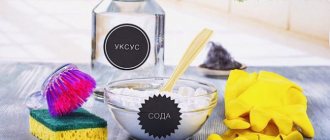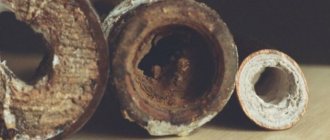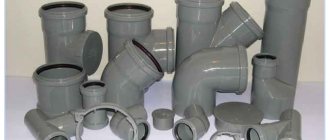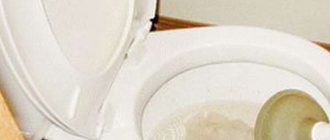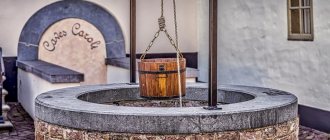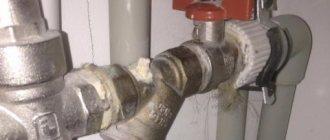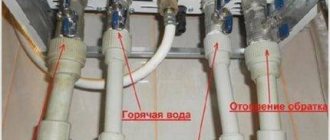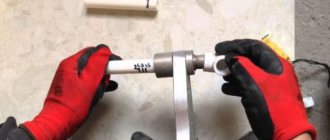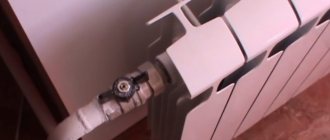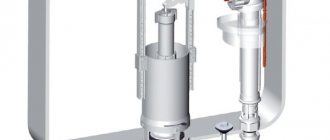Baking soda slaked with vinegar is often recommended as a leavening agent in modern recipes for making pastry or pancake dough. According to the recommendations, it is not vinegar and soda (by themselves) that should be added to the dough, but the product of their interaction - sodium acetate, since this is the substance that is formed during the process of quenching soda with vinegar. Sodium acetate (food additive E262) is used in food production as a preservative or acidity regulator, but not as a leavening agent. Sodium acetate has a fairly high thermal stability and does not decompose into gaseous products under baking conditions, i.e. It doesn't leaven the dough!
Benefits of these funds
- efficiency;
- availability;
- safety for human health.
When baking soda and vinegar are mixed, they create a foam that can be used to remove rust, mildew, grease, and dirty stains.
The disadvantage is the smell, but it can be easily removed with plain water or short airing.
Baking soda
Let's remember what this substance is. Its formula looks like this: NaHCO3. This is sodium bicarbonate, practically harmless to health. Moreover, it is used in medicine to treat a number of diseases, such as laryngitis, rhinitis, pharyngitis, and cough. A solution of baking soda perfectly disinfects wounds, helps get rid of heartburn and stomach pain. But what does clogged pipes have to do with it?
It turns out that if sodium bicarbonate is poured with vinegar, a chemical reaction occurs with the formation of salt and carbonic acid. The second substance is extremely unstable. It almost immediately breaks down into water and carbon dioxide. It is its bubbles that we see when extinguishing soda with any acid. It is believed that carbon dioxide can create high pressure, due to which the clog begins to be pushed through the pipe. Sodium bicarbonate and vinegar enhance the effect as they dissolve fat. Let's check it out.
We fight blockages
Hair and food debris clog your kitchen and bathroom pipes. Special products solve this problem, but at the same time cause allergies and spread a toxic odor that causes coughing and watery eyes. So use vinegar and baking soda. The method is notable for the fact that the cleaning agent is prepared directly in the pipe.
Instructions:
- Pour half a cup of baking soda and the same amount of vinegar down the drain.
- Close the hole with a stopper and do not use the sink for several hours.
- When the allotted time has expired, remove the plug and pour water heated to 90 degrees into the pipe.
Important: Strictly follow the proportions; vinegar and soda should be used in equal parts.
How to replace slaked soda with vinegar?
Instead of acetic acid, any food acid (lactic, citric, malic, tartaric, etc.) or acid salts approved for use in food production can be used to neutralize soda in the dough.
Citric acid (food additive E330) is very convenient in this regard. Citric acid does not have a strong odor and is sold in a crystalline state (in the form of a monohydrate, in which there is 1 molecule of water per 1 molecule of acid: C6H8O7∙H2O).
In order to completely extinguish 8 g (1 teaspoon) of baking soda, 6.7 g (1.5 teaspoons) of crystalline citric acid is required.
I will give a recipe for making early ripening pancakes, published more than 100 years ago (1901).
Please note that for 2.7 kg of dough in this recipe it is recommended to use only 1 teaspoon of soda, which is neutralized using 1 teaspoon of citric acid. Acid and soda are dissolved in water separately in different glasses! An acid solution is first added to the dough, stirred, and only then a soda solution is added. With this sequence of adding ingredients, the reaction between acid and soda occurs directly in the dough. Carbon dioxide quickly and evenly loosens the entire volume of dough, rather than entertaining the housewife with meaningless hissing and “bubbling” in a teaspoon.
With the ratio of citric acid and baking soda recommended in the recipe, the decomposition reaction of baking soda proceeds quite completely, but not completely. Some of the soda remains unextinguished. This is a very important condition for good loosening of the dough. Carbon dioxide released during the interaction of citric acid and baking soda loosens the pancake dough during its preparation. Excess baking soda will decompose as the pancakes bake and give them extra porosity.
Surprisingly, our great-great-grandmothers knew chemistry much better than us and knew how to use it correctly and quite intelligently.
Cleaning the microwave oven
The microwave oven gets dirty very quickly and should be washed after each use.
Method 1 - for old and stubborn stains:
- If the contamination is too strong, take 2 tbsp. l. vinegar and pour them into a bowl of water.
- Place this container in the microwave oven and turn it on for 10 minutes. Steam with acid will quickly remove all stains, and all you have to do is wipe the surface with a napkin.
Method 2 - for medium dirt:
- Dried splashes are removed using the same principle. 1 tbsp. l. Add a spoonful of baking soda to a bowl filled with 400 ml of water.
- Start the oven for 3 minutes.
- Remove greasy stains.
Tip: If the surface of the microwave oven is covered with enamel, then use vinegar as little as possible.
“Nutrilon® formula is not a complete substitute for breast milk.” (nutriclub)
Denaturation of proteins
Conduct an experiment with milk formula: dilute the milk formula with vinegar and see at what strength of vinegar the baby food begins to coagulate (coagulation). A normal stomach contains hydrochloric acid (NaCl), which helps digest food. But if baby food doesn’t curdle, why? Does baby food contain an anti-clotting agent? Or is somehow the protein in baby food already coagulated, but nevertheless “dissolved”, that is, goes into a colloidal solution (i.e., like in milk)?
Unanswered question (with hope for an answer): what if Nutrilon® milk formula does not curdle, what is the situation with children's digestion? Hey, Nutrilon® authors, clarify the mystery (if there is one)!
Getting rid of plaque in the kettle
Even the highest quality electric kettle is not immune to limescale deposits. As a result, the heating time increases, the device deteriorates, and the taste of the water becomes bitter. To avoid this, pour water into the kettle, add 100 ml of vinegar to it and turn on the device. Do not pour out the solution after it boils. It is advisable to leave the mixture overnight so that all the scale dissolves. You can do the same with soda (just slightly changing the proportions). For this we need 3 tbsp. l. soda and 1 liter of water.
Important: After cleaning with vinegar, wipe the kettle with a soda solution and rinse 3-4 times, each time removing drops with a dry cloth. Otherwise, the tea will taste like vinegar for a couple of days.
Hot water
Let's change the course of the experiment a little. This time we will fill the oil not only with a solution of vinegar and sodium bicarbonate, but also with very hot water. We will see that the fat has instantly dissolved. Let's remember our chemistry lessons. The teacher told them that when exposed to high temperatures (more than 60 ° C), baking soda turns into soda ash. This also produces carbon dioxide and water.
Externally, soda ash is practically no different from baking soda, but it is a completely different substance. Its formula looks like this: Na2CO3. Soda ash (sodium carbonate) can quickly dissolve fats and other contaminants. It is added to washing powders, preparations for cleaning pipes and cleaning various surfaces. Sodium carbonate is classified as hazard class 3. If it comes into contact with mucous membranes and skin, it can cause dermatitis.
Washing the dishes
An eco-friendly lifestyle is not just a fashion statement, but a concern for your health. You can replace synthetic dishwashing detergent with a safer analogue. A damp sponge dipped in soda effectively removes soot, soot, tea stains and yellowness. If unattractive stains remain on your crystal glasses after washing, rinse them in water with vinegar added. This method will make the dishes sparkle and destroy pathogens.
Sequence of mixing components
Unfortunately, many housewives do not know how to extinguish soda correctly and are confused about the sequence of connecting the components. To choose the most correct option, it is advisable to consider in detail the process of the reaction occurring. In the process of extinguishing soda with acetic acid in a separate container or spoon, intense bubbling with foaming occurs. During this reaction, carbon dioxide and sodium carbonate are released abundantly.
If the reaction occurs outside the dough, the carbon dioxide is wasted, leaving only sodium carbonate instead. It causes a soapy taste in finished products. However, by performing the soda extinguishing operation correctly, this effect can be avoided.
The procedure for extinguishing soda with vinegar:
- Mix baking soda with flour and other dry ingredients.
- Mix vinegar, which acts as an acid, separately with the liquid ingredients of the recipe.
- Combine liquid and dry ingredients.
It should be remembered that if the dough contains any acidic products - yogurt, sour cream, lemon juice, buttermilk - adding vinegar is not advisable. The necessary reaction will occur by itself, providing the finished product with airiness.
When baking soda and vinegar are combined, intense foaming occurs.
Removing stains from the sofa
Unpleasant odors, stains from coffee, fruits and juices - all this can be removed with a homemade product:
- To 0.5 liters of water add 150 ml of vinegar, 1 tbsp. l. soda and 100 ml of alcohol.
- Pour this mixture into a spray bottle and spray on the sofa.
- After 15 minutes, scrub the stain with a brush and then blot with a clean, damp cloth.
- Dry and vacuum the sofa.
Tip: Use baking soda separately for dry cleaning of furniture.
Bathtub cleaning
Housewives often encounter yellow stains on the inner surface of bathtubs. It is not recommended to use cleaning products with abrasive particles, as they can damage the coating and lead to microcracks. Soda ash and table vinegar will help deal with such deposits. Such a connection will rid the bathtub of contamination in a matter of minutes. Before starting cleansing, it is necessary to mix these substances in equal parts, and apply the resulting mixture to the areas of contamination. After 30 minutes, the stains should be rubbed with a brush and washed off with warm water. If the stains are old, the procedure must be carried out 2-3 times.
When working with substances, you need to wear gloves, avoid contact of the solution with mucous membranes and inhalation of vapors, especially when sodium bicarbonate reacts with vinegar.
Washing the tiles
Cleaning the tiles and removing dirt between the tile joints is not difficult:
- Pour half a glass of soda into a bowl, add 2 tbsp. l. vinegar, lemon juice and water.
- Apply the product to the brush and scrub the tiles, paying special attention to dark joints where mold forms.
- Then simply wipe the surface with a clean cloth.
